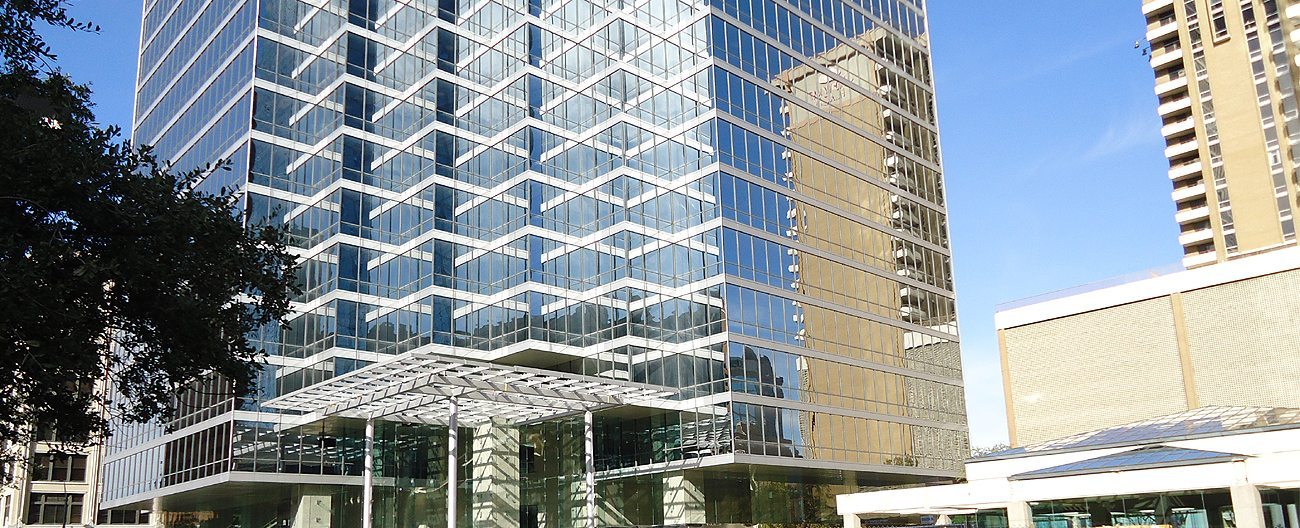 1. Compression Seal
1. Compression Seal
Description:
- Multi-cell Neoprene extrusion installed into epoxy “lubricating adhesive” applied to joint face.
Advantages:
- Best technology available at its introduction shortly after World War II
- Predecessor of all modern extruded expansion joint seals
Limitations:
- Anchoring system reliant on adhesive in tension – weakest way to use adhesive
- Must be force-compressed (squeezed) in the joint
- Limited movement: Max. joint size limited by relaxed width of seal. Min joint size limited by complex internal webbing.
- Compression set: permanent loss of ability to exert backpressure against substrate – substrate pulls away from seal
- Rigid “box” structure combined with poor anchoring system cannot handle vertical differential deflection (up and down) movement.
- Neoprene thermoplastic rubber extrusion cannot be heat-welded. Terminations and transitions in plane and direction as well as repairs must be glued. Glue dries out over time.
2. Inflated Seal
Description:
- Double or single barrier Neoprene thermoset rubber extrusion with joint face-applied epoxy “adhesive-in-tension” anchoring system
- Seal is inflated during installation to improve bond.
Evolutionary Advantages:
- Reduced interior webbing offers increased movement range over compression seal
Disadvantages:
- Anchoring system reliant on adhesive in tension – the weakest way to use adhesive.
- Approx. 18 square inches of adhesive in tension per foot of joint.
- Bond line stressed by: peeling action during up and down vertical deflection; gravel and sand forced by tires into epoxy-to-seal interface; and standard tension from lateral movement
- Does not protect joint edge. Blockouts with elastomeric header required to waterproof joint edges and prevent cracking and spalling
- Durable terminations, transitions and repairs difficult. Neoprene thermoset rubber extrusion cannot be heat-welded. Terminations and transitions in plane and direction as well as repairs must be glued. Glue is not UV stable and dries out over time.
- Poor extrusion tolerances of Neoprene yields excessive bulk at flexural nodes in gland, inhibiting movement and excessively stressing epoxy bond.
- Dependent on extremely smooth joint face. Relies on epoxy to fill irregularities.
3. Multi-Cell Blockout Adhered
Description
- Blockout-anchored multi-cell extrusion with integral punched flanges encapsulated in elastomeric concrete nosing material.
Evolutionary Advantages:
- Superior anchoring system to compression seal and inflated seal.
- Elastomeric concrete nosing encapsulates punched flanges, mechanically anchoring seal using adhesive in shear – strongest way to use adhesive.
- Over 45 square inches of adhesive in shear per foot of seal.
- Not affected by minor irregularities in joint face.
Disadvantages:
- Limited movement. Max. joint size limited by relaxed width of seal. Min joint size limited by complex interior webbing.
- Rigid “box” structure inhibits vertical differential deflection (up and down) movement capabilities.
- When retrofitting joint-face adhered technologies, requires cutting of blockouts. In new construction, blockouts can be formed.
4. Double Barrier Blockout Adhered
Description
- Double-Barrier Santoprene thermoplastic rubber extrusion with integral punched flanges encapsulated in elastomeric concrete nosing material.
Evolutionary Advantages:
- Latest evolution of gland design. Combines high-movement of double barrier inflated seal with integral flanges for secure blockout mounting.
- Elastomeric concrete nosing encapsulates punched flanges, mechanically anchoring seal using adhesive in shear – the strongest way to use adhesive.
- Weldabilty of thermoplastic-rubber extrusion allows for continuity of seal through changes in plane and direction and offers repairability.
- Over 45 square inches of adhesive in shear per foot of seal.
- Not affected by minor irregularities in joint face.
Disadvantages:
- When retrofitting joint-face adhered technologies, requires cutting of blockouts. In new construction, blockouts can be formed.
 1. Compression Seal
1. Compression Seal


